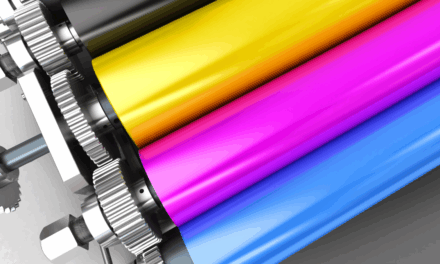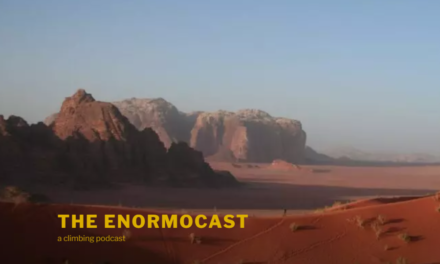
JULY 22, 2022
In Friday 5s: Today, it’s what to do now about Web3. Then we say goodbye to a content product, rejoice in a new integration, and dig into what marketers think that creators should know, too.
5 things to do
As a content creator, you can’t go on the internet without seeing Web3 conversations everywhere. To some, listening to those chats can be akin to listening to Charlie Brown’s teachers speaking in the TV cartoons: “wah wah woh wah wah.” To others, they can geek out talking about crypto, hard wallets, DAOs, and more.
But every content entrepreneur needs to pay attention to Web3 – it’s the very concept that makes building a long-term content business possible now and in the future. We consider it the creator’s superpower.
As Marc Angelos explains: “Web3 loosens the stranglehold that companies and governments have over information, intellectual property, and even the creation of currency.”
Know the lingo: We don’t expect you to memorize every word in the Web3 lexicon, so maybe this to-do item is “have a place to go when you hear or read an unfamiliar word.” The Tilt’s Marc Maxhimer came up with this 70+ term Web3 glossary. It can help you unravel these mysterious words. (And how a misspelled word is actually a word – think hodl instead of hold.)
Nurture a community: It may surprise some that a Web3 world is all about individual people coming together to engage together. In most cases, content creators would do well to transform their audience (passive viewers, readers, watchers) into a community (engaged members who interact with each other.) Mark Masters has taken the community view in building his content business and shared what he’s learned in the process.
Mint a token: Creator coins or social tokens are possible because they operate in a Web3 blockchain-based world. Not only do they act as a revenue stream, but they are also powerful tools for elevating your audience’s role in the business. Use coins to incentivize them to participate and engage. It gives them a currency in your business. That “buy-in” makes them more likely to get and stay involved in the community.
We’ve had $TILT coin for over a year to reward subscriber referrals ($5 in $TILT coin for each referral), as payment for merch and Creator Economy Expo, and more.
Use the real potential of NFTs: Many explain NFTs as digital art collectibles. We think that view is too narrow – it prevents people from recognizing the power of NFTs in a content business. An NFT represents a innovative opportunity if you don’t view it as a singular transaction but as the vehicle for an ongoing relationship with the holder. You could drop bonus content for them every once in a while. Maybe you extend an invite to a special NFT holder event. The possibilities are only limited by your imagination. (Check out how Tilt founder Joe Pulizzi uses NFTs as Never-Ending Tickets.)
Take back your power: Look at your business model. Is it built on a Web2 model that relies on social media platforms to access your audience, or are you in a Web3 world where you have direct contact with them? If your primary revenue stream depends on others’ algorithms and calculation benevolence, it’s time to take back control of your business.
5 things at the tilt 
- Want one-stop shopping for all things contract-related? Sign up for the newest free mini-course, The Content Entrepreneur’s Essential Guide to Contracts.
- We often forget to ask THE most important question when trying to sell a sponsorship package. Listen here to find out what it is. [Content Inc. podcast]
- Joe and Robert discuss that it’s first focus then diversification, that makes a great media company. [This Old Marketing podcast]
- ICYMI: Web3 World: Newsletter Is a Must for Creators
- Ever wonder how to get started?
5 things to know
Money
-
Buying integration: YouTubers with Shopify stores can rejoice. The two platforms partnered so eligible creators can link to their Shopify from the channel, and it all syncs inventory in real time. See the Shopping tab in YouTube Studio. (Tech Crunch)
Tilt Take: The integration means the audiences will stay on their channels – and keep consuming content – when they make a purchase. -
Bye Bulletin: Looks like Facebook is getting rid of the Bulletin, its paid subscriber newsletter feature, created to compete with Substack. A Meta memo says it’s shifting more resources to the creator economy. (The Wall Street Journal)
Tilt Take: Umm, wasn’t the paid newsletter subscription feature introduced as a new revenue stream for those creators in the creator economy? Call us confused but not surprised.
Audiences
-
Micro matters: Forecasts indicate micro influencers (5K to 19.9K followers) will be getting a big raise in marketing deals. Marketers expect to spend $2B by 2024, up from $650M in 2021. (The Information’s Creator Economy Newsletter via Jeremy Caplan)
Tilt Take: While influencers revolve around social media creators, we can easily see the connection to other content creators who have audiences that are attractive to brands.
Tech and Tools
-
You really like them: Twitter seems to be testing a new feature that indicates if the author of a tweeted article has liked the tweet. (Andy Beard; h/t tl;dr Marketing)
Tilt Take: It’s an easy and visible way for creators to acknowledge and appreciate others who help them broaden their content’s reach.
And Finally
-
Billions and billions: An Oxford Economics study found YouTube contributed more than $25B to the American economy in 2021 and supported over 425K full-time equivalent jobs. (Social Media Today)
Tilt Take: YouTube’s more than a powerful player in the creator marketplace, it’s got a gigantic importance on the national economy.
5 things to read, watch, or hear
- It pays to know how your potential buyers think. A Sprout Social survey of over 500 US marketers is eye-opening as they talk about marketing through creators. The two most popular reasons for these social partnerships? Generate more engagement and reach new audiences. They also reveal which platforms and content types have the most potential.
- Do you know BeReal? The Platformer tells the story of the quirky social network that’s been around for a couple of years, but now is experiencing big attention. To some, BeReal’s content model is anxiety-producing in a different way than most social platforms.
- Dream about the role to play in the metaverse. Time magazine publishes an interesting piece exploring the metaverse. Short on time? Scroll down to the what-is-the-future section.
- “Amplification” is a big word for promoting and widening the reach of your content. Though it’s a survey of B2B marketers, creators can learn a thing or two from Converge’s 2022 B2B Content Amplification Report. (75% say they don’t do it enough – we bet the same is true for content entrepreneurs. And that makes us sad because doing more with the content already created is smart business.)
- Perplexed by the merch process? YouTuber extraordinaire (and CEX speaker) Roberto Blake breaks it down in this video. He tackles the how-to of print-on-demand merchandise. It’s the best way to go so you don’t have to invest in inventory.
the tilt team
Your team for this issue: Joe Pulizzi, Pam Pulizzi, Ann Gynn, Laura Kozak, Marc Maxhimer, and Dave Anthony, with an assist from Heath Dingwell and Marc Angelos.
Get more of the Full Tilt stories on TheTilt.com.
Know a content creator who’s going full tilt? DM us or email [email protected]
Want to advertise on The Tilt? Go here.
Or email us at [email protected]
Interested in the tools we use? Check out our Tilt Tech Stack here.
Was this email forwarded to you? Get your own sub here.
Copyright ©2022 Tilt Media LLC All rights reserved.
Update your preferences | Unsubscribe | 17040 Amber Drive, Cleveland, OH 44111





